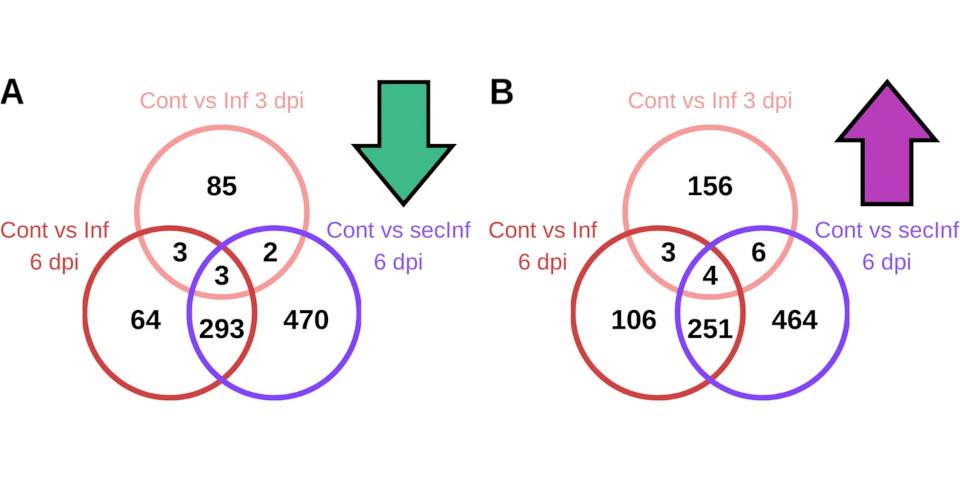Background:
European foulbrood is a significant bacterial brood disease of Apis sp. and can cause severe and devastating damages in beekeeping operations. Nevertheless, the epidemiology of its causative agent Melissococcus plutonius has been begun to uncover but the underlying mechanisms of infection and cause of disease still is not well understood. Here, we sought to provide insight into the infection mechanism of EFB employing RNAseq in in vitro reared Apis mellifera larvae of two developmental stages to trace transcriptional changes in the course of the disease, including Paenibacillus alvei secondary infected individuals.
Results:
In consideration of the progressing development of the larva, we show that infected individuals incur a shift in metabolic and structural protein-encoding genes, which are involved in metabolism of crucial compounds including all branches of macronutrient metabolism, transport protein genes and most strikingly chitin and cuticle associated genes. These changes underpin the frequently observed developmental retardation in EFB disease. Further, sets of expressed genes markedly differ in different stages of infection with almost no overlap. In an earlier stage of infection, a group of regulators of the melanization response cascade and complement component-like genes, predominantly C-type lectin genes, are up-regulated while a differential expression of immune effector genes is completely missing. In contrast, late-stage infected larvae up-regulated the expression of antimicrobial peptides, lysozymes and prominent bacteria-binding haemocyte receptor genes compared to controls. While we clearly show a significant effect of infection on expressed genes, these changes may partly result from a shift in expression timing due to developmental alterations of infection. A secondary infection with P. alvei elicits a specific response with most of the M. plutonius associated differential immune effector gene expression missing and several immune pathway genes even down-regulated.
Conclusion:
We conclude that with progressing infection diseased individuals undergo a systemic response with a change of metabolism and their activated immune defence repertoire. Moreover, larvae are capable of adjusting their response to a secondary invasion in late stage infections.










